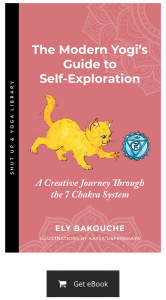I heard this term recently when a friend said, “Oh yeah, he’s got a yoga butt.” Yoga butt? Uhh, what? Sure, asana can be a great workout, and has a myriad of benefits beyond the caloric burn, but what is a yoga butt? I personally am unsure what exactly a yoga butt looks like; however, I do think a lot about the booty in yoga, but not in the way you may think.
In our modern society, we spend a lot of time sitting on our butts with our hips constantly flexed. As a result, our glutes are asleep for most of the time and need to be strengthened more than they need to be stretched, even though the feeling we experience in our hips is tightness. In fact, I find more and more students with glute weakness as the main cause of their hip tightness. This is often coupled with poor glute activation and difficulty getting them to fire in unison. Yoga gives us a good opportunity to wake our glutes up, and yet we often “stretch” them with “hip-openers” more than we intentionally strengthen them.
Our western lives generally don’t demand tons of hip-opening (I don’t sit at my desk with my legs behind my head), but we for sure could use a little extra strengthening. However, in our yoga practices, we often lack anatomical knowledge and cueing methodologies that facilitate stronger vs. “more open” glutes. I have had to change my own biases with this over time, moving from more hip-openers to more strength-based asana practices. Hip-opening doesn’t equate to stability the way strength does, and stability is really what we’re after to stay healthy and mobile in our day-to-day lives.
Stability means pairing skill and strength to allow the kind of movement we want: running with your dog, hiking up a beautiful hill, giving your niece a piggyback ride. The good thing is, much of what we do in yoga classes is surrounding the skill part. “Place your hand here,” “knee over ankle,” etc. Often we lack the necessary strength to accomplish the skill. More often than not, when we combine strength plus skill, we will achieve stability in our poses. When we are able to achieve stability in our poses continuously, we bring longevity and sustainability to our yoga practice.
So how does the booty relate? Well, in asana practice, we are moving in a way that gives us the unique opportunity to access the glutes in targeted ways, and we don’t always leverage that ideally. I hope to offer some clarity around why I think about the booty so much in yoga and give some idea of how to utilize the glutes to find stability in our practice.
For the purposes of ease of language, I will use words like “stretch” and “strengthen” often and recognize these terms are loaded and interpreted differently. Generally, when I use “stretch”, I am referring to static passive stretching, or holding a position with support (half pigeon pose) and when I use “strengthening”, I mean the active engagement of the muscle or muscle group (if you are a yoga dork like me and want further clarity of these terms, you can read Yoga Biomechanics by Jules Mitchell).
So what exactly are the glutes?
The glutes are beginning to emerge as “the new core” in movement communities. More and more movement professionals are stating that gluteal strength is just as important as core strength. And not because your squats make your Lululemon tights look better, but because, as movement professionals, we are realizing just how important the glutes are to functional and sustained movement.
The gluteal complex is made of three separate muscles, comprising of gluteus maximus, medius, and minimus. These muscles are layered on top of one another, with different origins and insertion points on and around the pelvis and the leg bone.
Gluteus maximus (or glute max for short) is responsible for many movements of the hip and pelvis. Most of our day-to-day life involves the movement of the legs and hips in some way, whether we are walking to lunch, sitting at a desk, or training in a gym. This is why glute max is so important; our daily activities demand it to be strong, not open. This is no different in yoga. Its primary responsibility is hip extension (which we find in most backbends or the back leg in a crescent lunge), abduction (when the leg is out to the side like in utthita hasta padangusthasana) and external rotation (when turning your inner thigh up/out like in trikonasana).
Gluteus medius and minimus assist with hip abduction, or moving the leg to the side and away from the body. So many yoga poses require this action as well. Think tree pose, the back leg in many standing open hip postures, upavistha konasana (wide angle seated pose), and more.
The role of glutes in hip stability and tightness
While it’s apparent by the actions of these muscles many poses in yoga utilize the glutes, we don’t necessarily leverage their power ideally. We focus more on stretching than we do strengthening. So why is it important to strengthen the glutes more than we stretch them? Well, for starters, weak glutes are a common cause of low back pain. Just Google it, and you will find tons of statistics and studies confirming this. Just to give you one example, here is an abstract from a recent study with people with non-specific low back pain. While low back pain is extremely complex and often has many attributes, the study does indicate that we should consider gluteus medius weakness prevalence in people with back pain. While telling every student to strengthen their glutes isn’t a panacea to all our aches and pains, it is something we can consider aiding in our yoga practice since we are moving our body around anyway. As we have learned, strengthening also can also lead to further stability within our poses.
Have you ever had back pain in chair pose? What about in locust or warrior 3? Yoga teachers will often observe this as weakness of the core, but it can also be because of poor glute activation. A common challenge I see in yoga poses is preventing the front knee in Warrior 2 (or other standing poses) from caving inward. While this isn’t always a red alarm, for some, it can be destabilizing within the knee joint and also contribute to other unstable joint positions in other parts of the body (like the ankle or hip). We often follow this observation with verbal cues of pulling the knee over the ankle or engaging the outer hip. When people are not able to adjust the knee in this way, it can be indicative of a need for gluteal strengthening.
While certainly, this is not always the case as it can be a myriad of other things, gluteal weakness can potentiate risky joint positions in the body. If we just keep telling the student to put the knee over the ankle over and over again in class and they never are able to, we aren’t giving them the tools they need to accomplish that joint position. Ultimately we are potentiating the inaccessibility of yoga and also losing a chance at helping them in a way we are equipped to do.
What to do when our hips feel tight
Do weak muscles feel tight? Yes. Does that mean they need to be stretched? No. Does it feel good? Sure, I love a half pigeon or a gomukhasana as much as anyone. But ultimately, it is not the most effective way to find more stability, nor is it the most efficient way to find increased mobility in our hips. We need to practice and cue these poses only after lots of glute activation. The “yoga butt” comment surprised me because what I see so much in yoga are the all-too-commonly cued hip openers, as opposed to more targeted gluteal strengthening and hip mobility work.
Yoga teachers can take a few tips from the functional movement community to get the glutes more involved in our yoga practice by just varying a few movements and inviting more strength-based asana to our practice.
Unfortunately, in yoga classes, poor gluteal cueing has been adopted. Have you ever been told to release the glutes in a bridge pose? Now that we understand that gluteus maximus is active in hip extension, like in bridge pose, we can see that we actually need it to be active in order to bring stability and ultimately depth to the pose. We can see by looking at how the glutes work; we can actually get them to work better for us. It may take time to get used to practicing and/or teaching like this, but it is worth it! Having a stronger command of our body and ultimately, the movement it produces not only helps our yoga practice but our lives. There are some ways to utilize props below, that will help you get used to how different activations feel in your body.
Here are a few tips to leverage stability and strength using your glutes in yoga poses:
1. Have you ever heard the cue, “Hug your outer hips in” or “Firm the sides of your hips”? The first time I heard this, I thought, “Am I doing that? What does that feel like?” Come to a stand, grab a strap, and loop it tightly around your thighs. In the same way as camel pose above, actively push out into the strap. Then bring your feet hip-width distance apart and sit down into chair pose while continuing to push your thighs out into the strap. You may be hating me at this point, but take a moment in this variation of the pose and feel how firm your outer hips become. You may also feel glute max fire. See if you can recreate some of that sensation in other poses, like crescent lunge or triangle. This is a way to become more aware of what those sensations are like and also to apply it to other asanas as well. The more awareness you can bring to your activation, the greater the chance you will have at bringing stability to other poses as well.
2. Use your glutes in bridge pose! At the same time, pull your heels apart and energize your inner thighs towards one another. You can practice this using a block in between the thighs to get used to the sensation. Keep your glutes engaged strongly as you are lowering back down to the ground.

3. Instead of taking chaturanga to upward facing dog, come to the floor and take a locust pose, or a cobra, alternating one leg lifted.
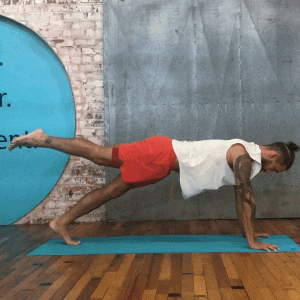
4. In camel pose, use a strap around the thighs and push your thighs away from each other as you extend the hips to activate gluteus medius. At the same time, squeeze your knees toward one another.

5. Next time your in side plank, lift your top leg slowly in the air but don’t bind your fingers to your big toe, keep the kinetic chain open to challenge your glutes, and get them to light up.
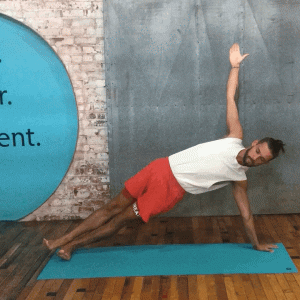
6. When stretching in a pose like half-pigeon, try engaging the glutes strongly while you are folding forward. Then periodically re-engage them while you are holding the stretch.
If you’re a yoga teacher, here are a few tips to help your students strengthen their glutes and find stability in their poses:
1. In tabletop, cue a leg extended out to the side and hover it, ankle in line with the hip, inner thigh spiraling up toward the sky. This will challenge all three parts of the glutes and also increase the demand on the core.
2. Think less stretch, more strengthen. How can you get the glutes more active in common poses? For example, in baddha konasana, instead of just folding forward to stretch the adductors, cue the students to reach forward and hover their spine and arms from the ground while simultaneously activating their glutes to drive their knees toward the ground. Take this for five rounds for five breaths each. Your students might get angry at you, but their glutes will be happy.

3. Get creative with props. Next time you cue bridge pose, have the students strap their thighs hip-width distance apart and push their legs out into the strap when they lift the hips. Or, instead, bring a block under one foot while extending the opposite leg toward the sky and then take bridge pose. Have them dip their hips to the ground and then lift back up. Repeat that 10 times each side.

4. Next time you’re in warrior 3, have them bend the knee of the extended leg and pulse the leg up toward the sky 10 times. This will not only challenge their balance but also get glute max fired up. You can also do this in tabletop position.
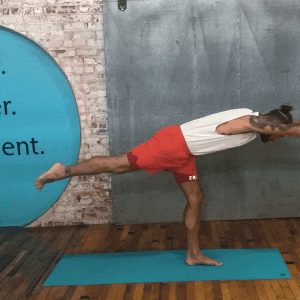
5. Substitute vinyasas for prone backbends every now and then.

6. Play with resistance. In goddess pose, have the students bring their hands to their outer thighs and try to push the thighs inward, cue them to resist this action. This will challenge the glutes to keep the legs in their position.
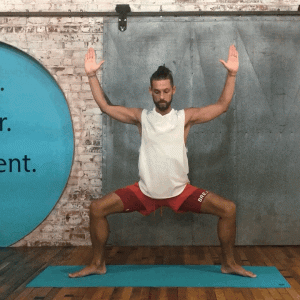
7. Open the kinetic chain. Opening or closing kinetic chains are great ways to progress or regress poses and also to target muscle groups more specifically. A closed kinetic chain generally refers to the portion of the body that is farthest away from the trunk is fixed or unable to move (like the hands in downward facing dog), an open kinetic chain will allow movement and is not fixed (like the hands in warrior 2). Here’s an example that will challenge the glutes: Cue them into tree pose, then cue students to slowly remove the foot from the thigh, calf, or floor, but keep the position of the leg and hip and feel the burn! You can progress this further using utthita hasta padangusthasana and have them release the foot but keep the leg abducted and externally rotated. This is an excellent way to progress the pose.

8. Think in pose progressions. How can you progress a pose to be more glute focus?
- Bring your students into Warrior 2 longways along the wall. Place a block in between the front knee and the wall. Challenge your students to push the knee/thigh against the block and keep it there. This is an accessible way to progress something to be targeted toward strengthening the glutes and also will provide them with an actionable sensation they can translate every time they come into Warrior 2 after that.
- Another progression example: from side plank or side plank with the bottom knee down, cue to lift the top leg up toward the sky while keeping it in the same plane as the body. This will increase the demand for all three glutes.
Get creative in your yoga practice. Practice for strength and stability, and not just flexibility. Having a healthy range of motion is great, but supporting that range of motion with healthy muscles and joint stability will promote longevity and make your practice sustainable. We can all have a yoga butt, not because it looks a certain way, but because we know how to activate it and use it skillfully. It doesn’t matter what it looks like, just how you are able to use it.
For more ideas about getting creative in your yoga practice or teaching and further references, check out these movement masters:
- Noah Mazé – my personal teacher and also an expert on applying anatomical concepts to yoga poses. Check out his classes on Yoga International.
- Rocky Heron – yoga teacher that blends yoga and functional movement. Check out this course on Yoga International about blending isometric strength into your practice
- Functional Range Conditioning – lots of interesting movement techniques about achieving more control of our ranges of motions that are directly applicable to asana. Hunter Cook is with their organization and made Shut Up & Yoga’s list of 19 Influential Yoga & Movement Teachers
- Mindful Strength led by Kathryn Bruni-Young has an online library of lots of strength-based yoga practices.
Edited by Ely Bakouche




